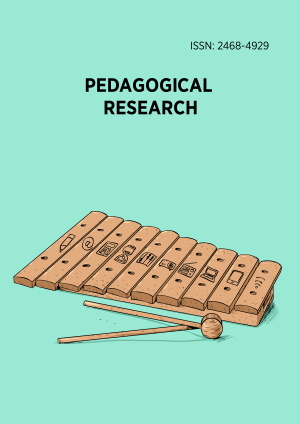Abstract
This study aims to reveal how the embodied cognition of certain geometrical concepts of secondary-school students arises via gestures and what kinds of gestures they produce while engaging with different concepts. The study participants comprised four eleventh-grade students studying at a state high school in Turkey. The study focused on the gestures of students related to angle, a measure of an angle, congruence-similarity, and translation. Data were gathered via video-recorded focus group discussions and individual interviews, and the cognition of the students for each concept was coded using content analysis. According to the research findings, it was found that the deictic gestures of the participants reflect the grounding of cognition in the physical environment; representational gestures manifest mental simulations of action and perception, and some metaphoric gestures reflect body-based conceptual metaphors.
License
This is an open access article distributed under the Creative Commons Attribution License which permits unrestricted use, distribution, and reproduction in any medium, provided the original work is properly cited.
Article Type: Research Article
PEDAGOGICAL RES, Volume 8, Issue 2, April 2023, Article No: em0152
https://doi.org/10.29333/pr/12786
Online publication date: 02 Jan 2023
Article Views: 1129
Article Downloads: 825
Open Access References How to cite this article
 Full Text (PDF)
Full Text (PDF)